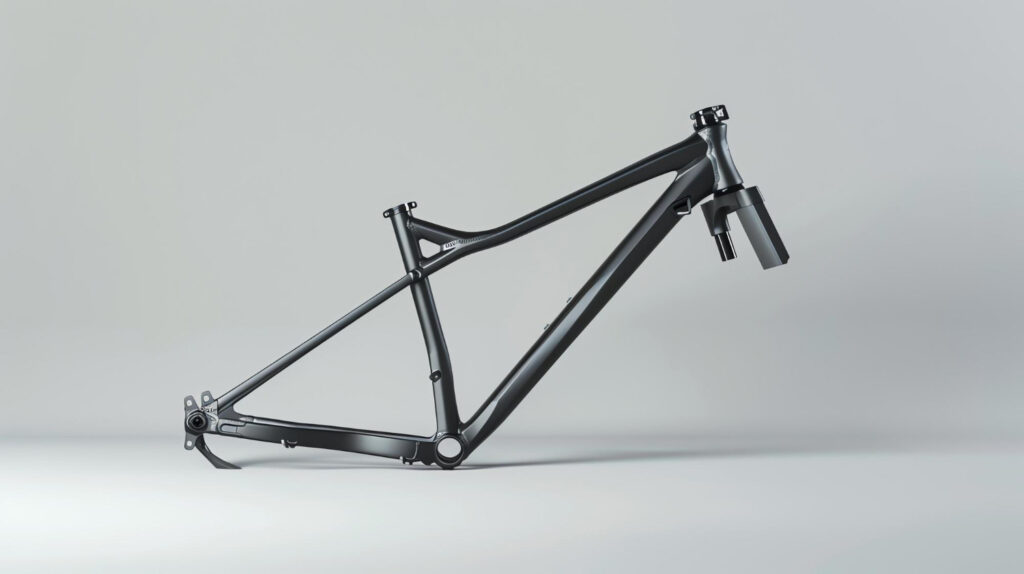The Importance of Mountain Bike Geometry
When diving into the world of mountain biking, one of the first things you’ll encounter is geometry. You may hear riders debating between different frame sizes, angles, and suspension designs. At first glance, it might seem like a mix of jargon and manufacturer marketing hype. However, understanding the science behind mountain bike geometry is crucial for making informed choices that can greatly enhance your riding experience.
What Is MTB Geometry?
Mountain bike geometry refers to the angles and dimensions of the bike’s frame and the overall setup. This includes the length of the top tube, seat tube angle, head tube angle, wheelbase, and more. Each of these measurements affects how the bike responds on various terrains. You can think of it as the bike’s blueprint—one that determines the balance between speed, control, and comfort.
Key Terms Explained
- Top Tube Length: The horizontal distance from the seat tube to the head tube. It influences how stretched out or compact you feel while riding.
- Seat Tube Angle: The angle of the seat tube in relation to the ground. A steeper angle can help with climbing efficiency.
- Head Tube Angle: This angle affects steering responsiveness. A slacker angle is generally more stable at high speeds.
- Wheelbase: The distance between the front and rear axles. A longer wheelbase can offer better stability, while a shorter one is more maneuverable.
Why Geometry Matters
Geometry impacts your ride in several ways, including handling, comfort, and performance. Each component serves a specific purpose, and the right combination can help you conquer challenging trails.
Handling and Control
A bike’s geometry greatly influences its handling characteristics. For instance, if you love hitting tight, twisty singletracks, a bike with a shorter wheelbase can help you carve through turns more easily. Think of it as the difference between driving a compact car versus a large SUV. The shorter wheelbase gives you agility, while a longer one offers stability when flying down descents.
On the other hand, if you’re into high-speed downhill runs, you might want a bike with a longer wheelbase and a slacker head tube angle. This setup can provide more stability, making you feel more confident at speed. I remember my first ride on a bike with a slack geometry; it felt like I could tackle anything without flipping over the handlebars.
Comfort during Rides
Riding should be enjoyable, not a test of endurance when it comes to discomfort. The geometry of your bike plays a significant role in this. A proper seat tube angle can help position your body over the pedals effectively. A more relaxed angle allows for a comfortable, upright position, which is perfect for long rides.
However, too relaxed can compromise your climbing ability. It is a balancing act. If the seat is too far back, you’ll find that you struggle on steep climbs. It’s like trying to climb a hill while leaning back— no fun at all!
Performance and Climbing Ability
When it comes to climbing, the right geometry can make a world of difference. A steeper seat tube angle helps keep your weight over the pedals, allowing for more effective power transfer. In my own experience, switching to a bike with a 74-degree seat tube angle improved my climbing significantly. Fewer wheel lifts and a better transfer of power meant less fatigue during long ascents.
Different Types of MTB Geometry
Not all mountain bikes are created equal, and that is where you notice the drastic differences in geometry based on the type of riding you prefer. Let’s take a look at a few popular styles.
Cross-Country (XC) Bikes
Cross-country bikes are designed for speed and efficiency. Their geometry typically includes:
- Steep head tube angles (about 69-70 degrees)
- Long stems for stability
- Short reach
This geometry allows for quick acceleration and efficient climbing. I’ve had countless rides where a quick burst of speed managed to outpace my buddies, thanks to a snappy XC bike.
Trail Bikes
Trail bikes are more versatile and designed for a mix of climbing and descending. The geometry usually sits somewhere in between XC and downhill bikes:
- Moderate head angle (around 66-68 degrees)
- Longer wheelbase for stability
- Balanced reach
This type of geometry makes trail bikes a fantastic choice for those who love a bit of everything. I remember transitioning to a trail bike and feeling like it could handle anything from climbs to rough descents.
Downhill and Enduro Bikes
For those who love descending at high speeds, downhill bikes offer slack, stable geometry:
- Slack head tube angles (about 63-65 degrees)
- Shorter top tubes
- Long wheelbases
The goal here is stability at speed. I recall riding a downhill bike for the first time and experiencing a sense of control I had never felt before on rough descents. It was exhilarating and made me feel invincible.
Choosing the Right Geometry for You
Alright, so how do you decide which geometry suits you best? Here are some factors to consider:
Your Riding Style
Are you a casual rider, or do you tackle advanced trails? Understanding your style will guide your geometry choice. Casual riders may prefer a more forgiving bike, while aggressive riders could benefit from a steeper and more precise setup.
Terrain Preferences
Consider the trails you frequently ride. Technical and steep trails might demand a bike with a slack geometry, while smoother trails could be easier to ride on a steeper setup.
Physical Attributes
Your height and body type can also influence which bike you’ll feel most comfortable on. Generally, manufacturers provide size charts to help you select the right frame size based on your measurements.
Final Thoughts
Understanding mountain bike geometry is essential to elevating your riding experience. It impacts everything from the bike’s handling to your comfort and overall performance. Whether you’re a seasoned rider or just starting, familiarizing yourself with these concepts can lead to better choices and an improved connection between you and your bike.
Remember, the right geometry can transform your ride, so choose wisely. As you explore different bikes, take the time to test ride various setups. You will be amazed at how distinct each style feels. Happy riding, and may your trails be filled with fun, speed, and confidence!






